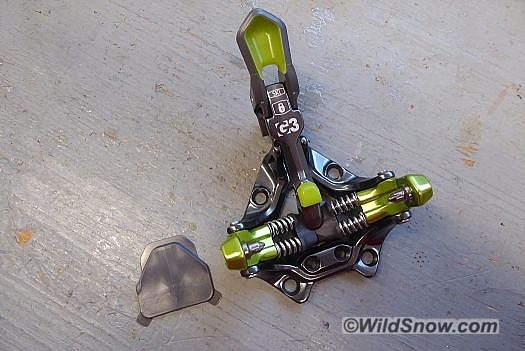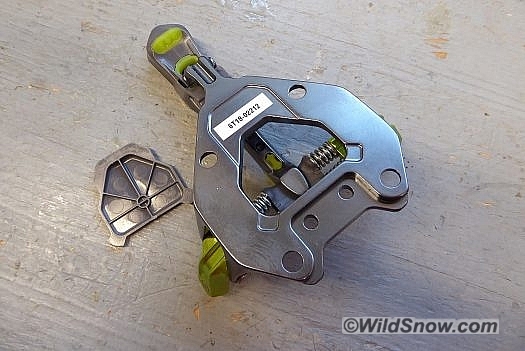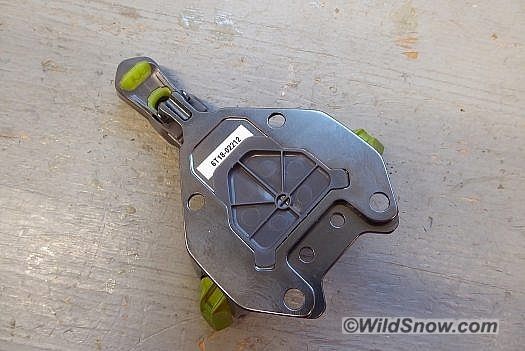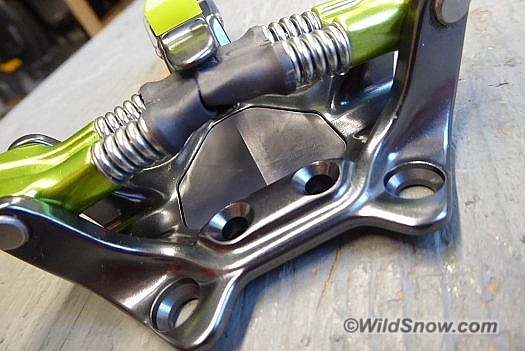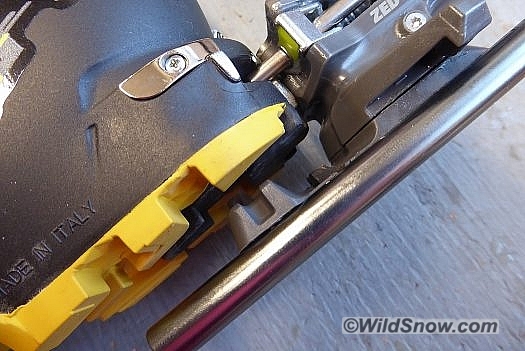This post sponsored by our publishing partner Cripple Creek Backcountry.
G3 helped us out some time ago with a technical look at their ZED binding. Overall we were favorably impressed, but I wanted a little more time with the sweet thing. A pair is now living here at WildSnow HQ, so how about a few supplementary details before we get them on the snow?
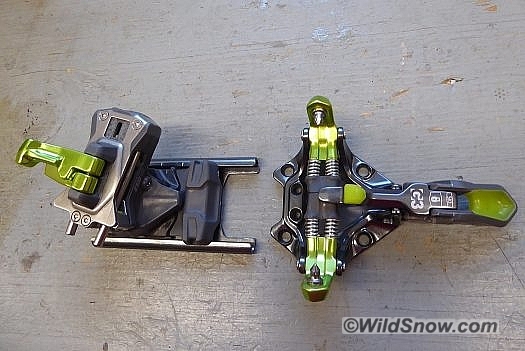
The whole kahuna, sans brake. We’ll detail the brakes in another post. Know for now that they’re easy to install-remove, though to do so you remove the heel unit from the heel plate (which can remain screwed to the ski).

Nicely etched numbers. Presumably calibrated to fall within the DIN/ISO standard deviation. That’s important.

Worth repeating: Forward (vertical) and Lateral (side) retention are adjusted with the same screw, using pozidrive 3. More, the boot length adjustment screw (not shown) is pozi as well, per industry convention. Wouldn’t it be nice if all bindings had the “all pozi” advantage? Would save me the two ounces of driver bits I lug around in my repair kit. And hours swapping screwdrives while in the shop.
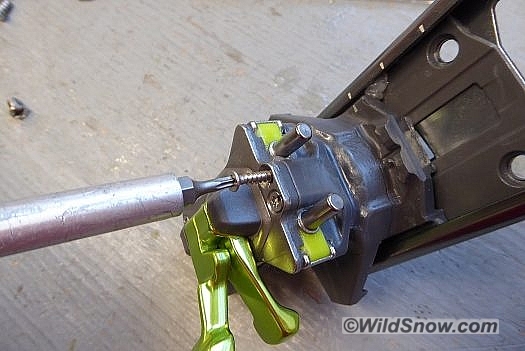
Top plate screws can be an issue with any ski touring tech binding that goes with the “classic” design. These look fine, beefy and long, stainless.
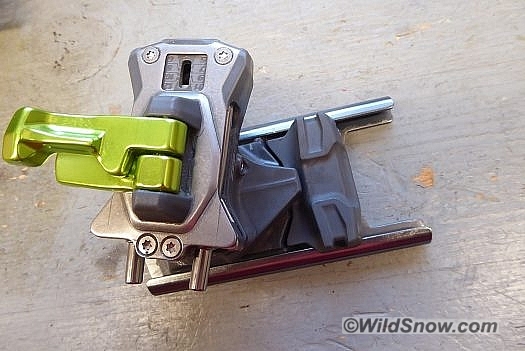
Heel with stomp pad. While touring with “heel flat on ski” the binding tab supports your boot heel rather than the pad. In alpine mode, the pad is ~5 millimeters below your boot heel and presumably supports it when you do something forcefull that causes the binding heel to bend and deflect. During normal skiing, with most tech bindings you want your boot suspended between toe and heel, touching nowhere else. I’m finding it hard to imagine the binding deflecting enough to drop the boot heel 5 mm, but stranger things have happened in Canada. (smile)
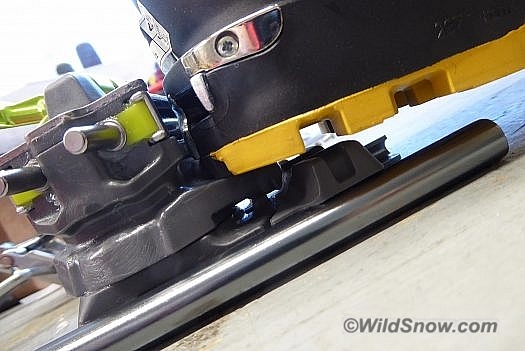
Uphill touring mode, heel flat on ski. Binding is properly adjusted for boot length, with the “kiss gap” between heel and binding (you adjust so it lightly touches, while on bench).
Note: If your ski is flexed, for example, while standing in powder, the kiss gap may result in your boot heel hitting the binding as you attempt to stomp-click into downhill mode. This syndrome is detailed here. Factors such as your boot model, weight, and ski flex influence this. But most importantly, it’s good to have a small ramp at the top of the binding heel to lead your boot down when you stomp for click-in. Zed (proper case intentional) lacks this. Whether that will be a problem for Zed (proper case intentional), consumer testing will tell the tale.
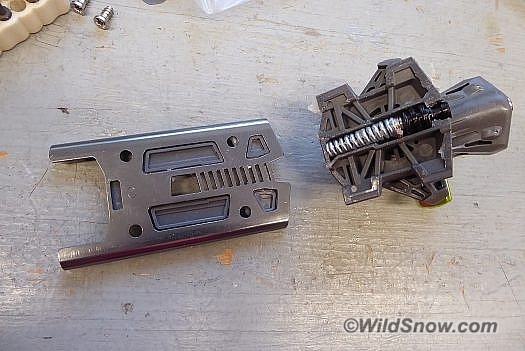
ZED’s Ski flex compensation system and boot length adjustment is typical of this binding genre, G3’s appears well designed, allows a centimeter of movement.
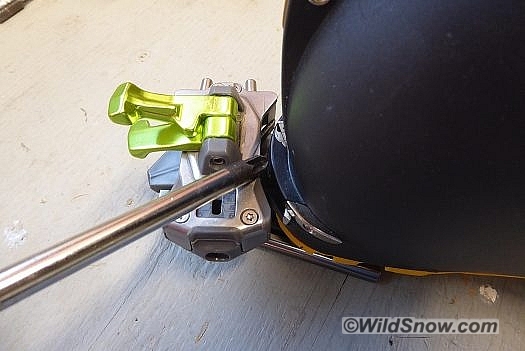
With a binding that uses kiss gap, this wider gap in touring mode is essential. Otherwise your boot heel will rub and catch in on the binding when you flex your ski (for example, while breaking trail in powder).
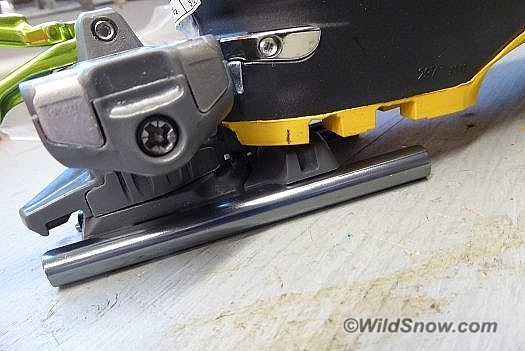
Ski touring boot in uphill mode, G3 ZED. Not obvious in photo, but boot heel does not rest on the stomp pad but rather on a tab protruding from the binding.
Factoids:
Verified weights, retail version:
—- Total 374 grams (13.2 oz) single binding with screws, no brake, no crampon mount.
—- Toe 128 grams (4.5 oz) no crampon mount, with screws.
—- Heel 246 grams (8.7 oz) no brake, with screws.
—- Brake, 115 mm, 86 grams (3.0 oz)
Climbing post heights and delta angle.High-quality
Screw pattern = Matches ION, wide, heel 36.5 mm, toe 40 mm.
Available brakes: 85,100,115,130 mm.
Boot length adjustment range 30 mm, 62 with demo plate at about 25 grams weight increase per binding.
Release values (RV) 5-12.
Ski flex compensation 10 mm (known as “forward pressure” to those who don’t understand, though it is not “forward pressure”).
Overall impression: High-quality addition to the breed, typical of G3. Recommended, with a caveat: This is the first full-retail season for ZED, consumer testing will reveal the final verdict. We never entirely trust ski touring bindings until they’re vetted.
WildSnow.com publisher emeritus and founder Lou (Louis Dawson) has a 50+ years career in climbing, backcountry skiing and ski mountaineering. He was the first person in history to ski down all 54 Colorado 14,000-foot peaks, has authored numerous books about about backcountry skiing, and has skied from the summit of Denali in Alaska, North America’s highest mountain.

